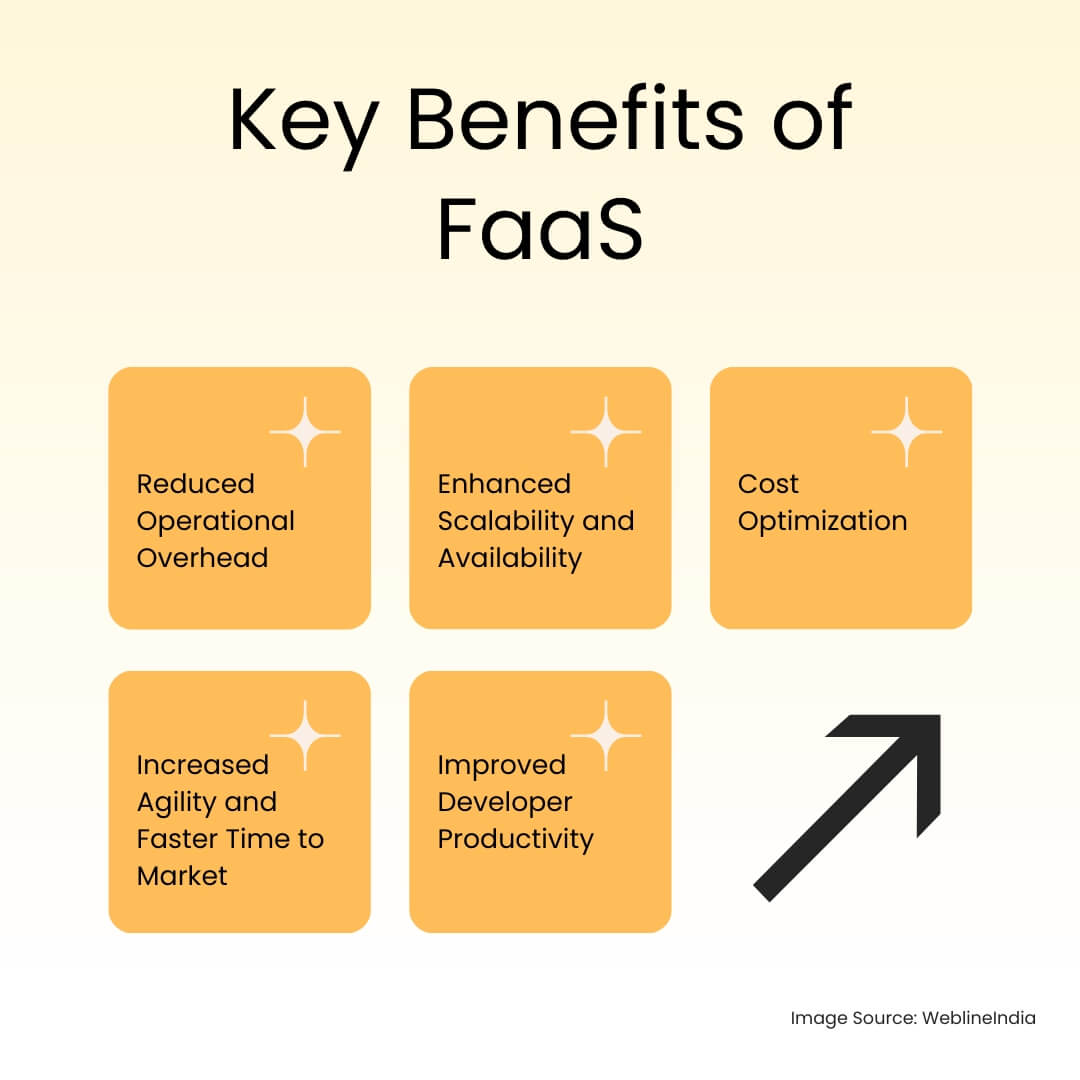Listen to the podcast :
Serverless computing is quickly gaining traction in the era of cloud computing. This model shifts the burden of server management from software developers to cloud providers, offering a more efficient way to build and scale applications. In serverless architecture, software developers can focus solely on writing code, while cloud platforms take care of everything from infrastructure to scaling and monitoring. One of the most powerful facets of serverless computing is Function-as-a-Service (FaaS), which offers flexibility, scalability, and cost-efficiency.
Understanding Serverless Computing
Before diving into the specifics of Function-as-a-Service, it’s important to understand the concept of serverless computing. Unlike traditional models, where software applications run on dedicated servers or virtual machines, serverless computing abstracts away the infrastructure management tasks. This means software developers no longer need to worry about provisioning or maintaining servers. The cloud provider automatically handles the scaling of resources as needed, ensuring that the application performs optimally without manual intervention.
In a serverless architecture, users pay only for the compute resources they consume. This is a stark contrast to traditional models, where you often pay for a fixed amount of server capacity regardless of its usage. Serverless computing significantly reduces costs because it eliminates the need to provision idle servers, and resources are allocated dynamically.
Ready to Leverage Serverless Computing for Your Business?
What is Function-as-a-Service (FaaS)?
Function-as-a-Service (FaaS) is a pivotal component of serverless computing. It provides a platform for developers to build, deploy, and execute modular pieces of code (functions) in response to events or requests. These functions are typically short-lived, stateless, and designed to perform specific tasks. FaaS offerings from major cloud providers like AWS Serverless Services (including AWS Lambda) abstract away the complexities of server management, scaling, and infrastructure maintenance.
Characteristics of FaaS
- Event-driven execution: Functions in FaaS are invoked by specific events, such as an HTTP request or a change in a data store. This means the application remains lightweight and resource-efficient.
- Stateless: Each function execution is independent and does not rely on the state of previous executions. This promotes scalability and fault tolerance, as functions can run in parallel without any dependencies on each other.
- Automatic scaling: FaaS handles scaling automatically. As the demand for a function increases, additional instances are created to handle the workload. Once the demand decreases, the instances are scaled down, making it an ideal solution for applications with varying traffic.
- Pay-as-you-go: Users are charged based on the number of executions and the resources used, such as execution time and memory consumption. This eliminates the need for over-provisioning and ensures that developers only pay for what they use.
Key Benefits of FaaS
FaaS offers a compelling value proposition for developers and organizations alike. Let’s explore some of its key benefits:

1. Reduced Operational Overhead
With FaaS, developers can focus entirely on writing code without the burden of managing servers or infrastructure. The cloud provider takes care of server provisioning, operating system updates, security patching, and scaling, significantly reducing operational overhead. This allows developers to dedicate more time to innovation and delivering business value.
2. Enhanced Scalability and Availability
FaaS platforms inherently possess auto-scaling capabilities. They dynamically adjust the number of function instances based on real-time demand. This ensures that applications can handle traffic spikes and maintain high availability without manual intervention. The underlying infrastructure scales seamlessly, providing a smooth user experience even during peak loads.
3. Cost Optimization
FaaS follows a pay-as-you-go pricing model. You only pay for the compute time actually consumed by your functions. This granular pricing model eliminates the need to pay for idle server capacity, leading to significant cost savings, especially for applications with sporadic or unpredictable traffic patterns.
4. Increased Agility and Faster Time to Market
FaaS promotes agile development practices. The ability to deploy small, independent functions facilitates rapid iteration and experimentation. Developers can quickly update or add new functionalities without affecting other parts of the application. This accelerates the development lifecycle and enables faster time to market for new products and features.
5. Improved Developer Productivity
FaaS streamlines the development process by abstracting away infrastructure concerns. Developers can use their preferred programming languages and tools to write functions. The simplified deployment process and the availability of pre-built integrations with other cloud services further enhance developer productivity, allowing them to focus on core business logic.
What are the Key Benefits of Serverless Computing?
- No server management: Developers don’t need to provision, update, or maintain servers — the cloud provider handles everything.
- Pay-as-you-use model: You only pay for actual execution time, which lowers infrastructure and idle resource costs.
- Automatic scaling: Applications scale up and down instantly based on traffic, ensuring consistent performance during peak loads.
- Faster development & deployment: Teams can ship features quickly without worrying about backend infrastructure setup.
- High availability & reliability: Built-in fault tolerance and distributed infrastructure minimize downtime.
- Reduced DevOps overhead: Less configuration and maintenance means smaller operations teams and faster delivery.
Popular AWS Serverless Services
Amazon Web Services (AWS) provides a variety of serverless services designed to help developers build scalable, cost-effective applications. Some of the most popular AWS serverless services include:
AWS Lambda
AWS Lambda is the cornerstone of AWS’s serverless computing offering. It allows developers to run code in response to events such as HTTP requests, file uploads, or changes to a database. Lambda functions scale automatically and can be triggered by various AWS services, such as Amazon S3, DynamoDB, and SNS.
- Event-driven: Lambda functions are executed in response to specific events.
- Integration with other AWS services: Lambda integrates seamlessly with other AWS services like API Gateway, DynamoDB, and S3 to create end-to-end serverless applications.
Amazon API Gateway
Amazon API Gateway is a fully managed service that enables developers to create and manage APIs for serverless applications. It supports serverless computing use cases, such as exposing RESTful APIs to trigger FaaS functions.
- Automatic scaling: API Gateway scales automatically to handle increasing traffic.
- Security features: API Gateway supports authentication and authorization using AWS Identity and Access Management (IAM) and Amazon Cognito.
AWS Step Functions
AWS Step Functions provides a way to coordinate multiple serverless functions into workflows. It allows developers to build complex applications by chaining Lambda functions together and managing the state between them.
- Flow orchestration: Step Functions manage the flow of data between Lambda functions and other AWS services.
- Error handling: It offers built-in error handling and retry mechanisms for more resilient workflows.
Want to Build Scalable Apps with Function-as-a-Service?
Best Practices for Serverless Development
Maximizing the benefits of FaaS and serverless computing involves adhering to best practices and continuously expanding your knowledge. Here are some key areas to focus on:
Recommended Books
- “Serverless Architectures on AWS” by Peter Sbarski: A comprehensive guide to designing, developing, and deploying serverless applications on AWS.
- “Programming AWS Lambda” by John Chapin: A deep dive into AWS Lambda, covering various aspects of function development and deployment.
- “Serverless Design Patterns and Best Practices” by Brian Zambrano: Explores common design patterns and best practices for building serverless applications.
Best Practices for Serverless Architecture Implementation
- Function Granularity: Design functions to perform specific tasks, keeping them concise and focused. This improves modularity, reusability, and maintainability.
- Statelessness: Ensure functions are stateless to facilitate scalability and reliability. Utilize external services for state management.
- Event-Driven Design: Embrace event-driven architecture to trigger functions based on events, promoting loose coupling and responsiveness.
- Security: Implement robust security measures, including IAM roles and policies, to control access to serverless resources.
- Monitoring and Logging: Utilize monitoring tools like AWS CloudWatch and logging services to track function performance, identify errors, and gain insights into application behavior.
Case Studies
- Netflix: Utilizes serverless extensively for video encoding, transcoding, and content delivery, achieving significant cost savings and scalability.
- Coca-Cola: Implemented a serverless architecture for its vending machines, enabling real-time data collection, inventory management, and personalized customer experiences.
- Airbnb: Employs serverless for image processing, user authentication, and other critical functionalities, enhancing agility and responsiveness.
By implementing these best practices and continuously learning from successful case studies, you can effectively leverage the power of serverless computing and FaaS for your applications.
Limitations of Serverless Computing
While serverless computing offers numerous benefits, it is important to consider some limitations that could impact certain use cases. Understanding these factors will help developers make informed decisions when choosing serverless solutions.
Execution Time Limits
One key limitation of serverless computing is the execution time limit imposed on serverless functions. Providers, such as AWS Lambda, typically set a maximum execution time for each function (e.g., 15 minutes). This can be restrictive for applications requiring long-running processes, such as complex data analysis or large file processing. Developers need to consider whether their workloads are suitable for these time constraints or explore workarounds like breaking tasks into smaller, more manageable chunks.
Vendor Lock-In
Another consideration is the potential for vendor lock-in. As serverless architecture often relies heavily on a specific cloud provider’s ecosystem, switching providers or migrating services can become challenging. Cloud-specific features and integrations may not be easily replicated in another provider’s environment, making it difficult for organizations to change providers in the future without significant rework. This factor can be a concern for businesses seeking flexibility and long-term strategy.
Latency Issues and Cold Start Latency
Serverless computing can also face latency challenges, particularly cold start latency. When a function is invoked for the first time or after being idle for a period, it may experience a delay in execution as the cloud provider initializes the resources. This “cold start” latency can impact application responsiveness, especially for real-time applications where low latency is critical. While the effect is often negligible for many use cases, it’s important to evaluate how cold starts could affect user experience, especially in latency-sensitive applications.
While these limitations are noteworthy, they do not overshadow the numerous advantages serverless computing provides, and solutions like optimizing function size, managing execution limits, and caching can help mitigate many of these concerns.
Conclusion
Serverless computing and Function-as-a-Service have revolutionized the way developers build and scale applications. Serverless architecture enables businesses to build applications that are both cost-effective and highly scalable by abstracting away infrastructure management and offering automatic scaling.
You can find a custom software development company that excels at platforms like AWS and provides robust serverless service. With such customized solutions, you can focus on creating innovative solutions while leaving the complexities of infrastructure to the cloud providers. The benefits of serverless computing, such as cost efficiency, improved scalability, and faster time-to-market, make it an essential choice for modern application development.
Social Hashtags
#Serverless #FaaS #CloudComputing #AWSLambda #AzureFunctions #GoogleCloudFunctions #Microservices #DevOps #CloudArchitecture
Interested in Developing Serverless Solutions for Your Applications?
Testimonials: Hear It Straight From Our Global Clients
Our development processes delivers dynamic solutions to tackle business challenges, optimize costs, and drive digital transformation. Expert-backed solutions enhance client retention and online presence, with proven success stories highlighting real-world problem-solving through innovative applications. Our esteemed Worldwide clients just experienced it.
Awards and Recognitions
While delighted clients are our greatest motivation, industry recognition holds significant value. WeblineIndia has consistently led in technology, with awards and accolades reaffirming our excellence.

OA500 Global Outsourcing Firms 2025, by Outsource Accelerator

Top Software Development Company, by GoodFirms

BEST FINTECH PRODUCT SOLUTION COMPANY - 2022, by GESIA

Awarded as - TOP APP DEVELOPMENT COMPANY IN INDIA of the YEAR 2020, by SoftwareSuggest